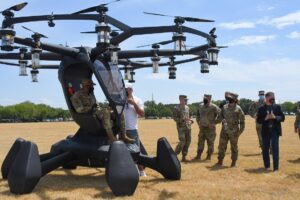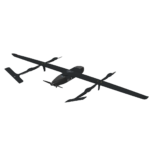
Leadership from the U.S. Air Force observed a manned demonstration of an electric vertical takeoff and landing (eVTOL) aircraft last week near Austin, Texas. Secretary of the Air Force Barbara Barrett and Chief of Staff Charles Q. Brown, Jr. were on hand to witness LIFT Aircraft’s HEXA, a single-seat eVTOL aircraft powered by 18 overhead electric motors and propellers, fly for four minutes in a demonstration that included hovers, turns and forward flight within 40-feet of the ground. The demonstration…

 By
By 











